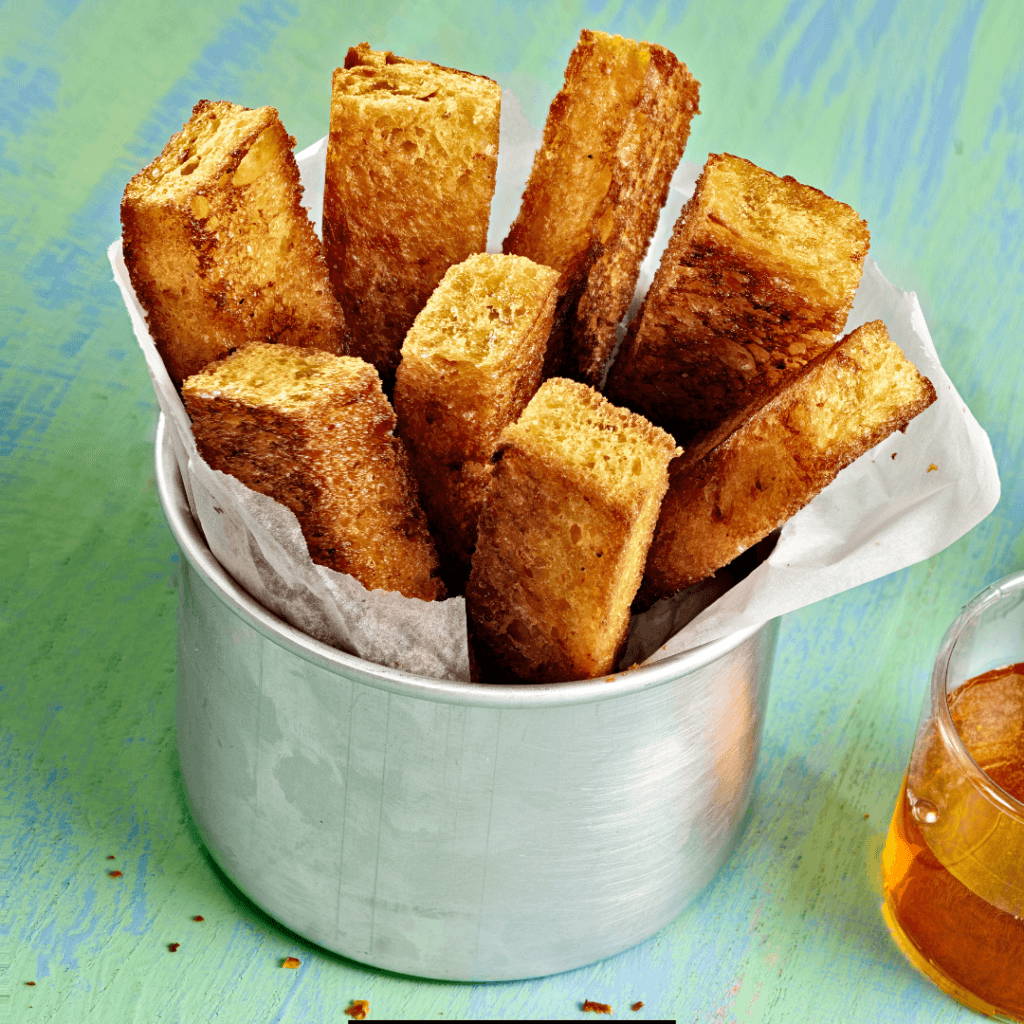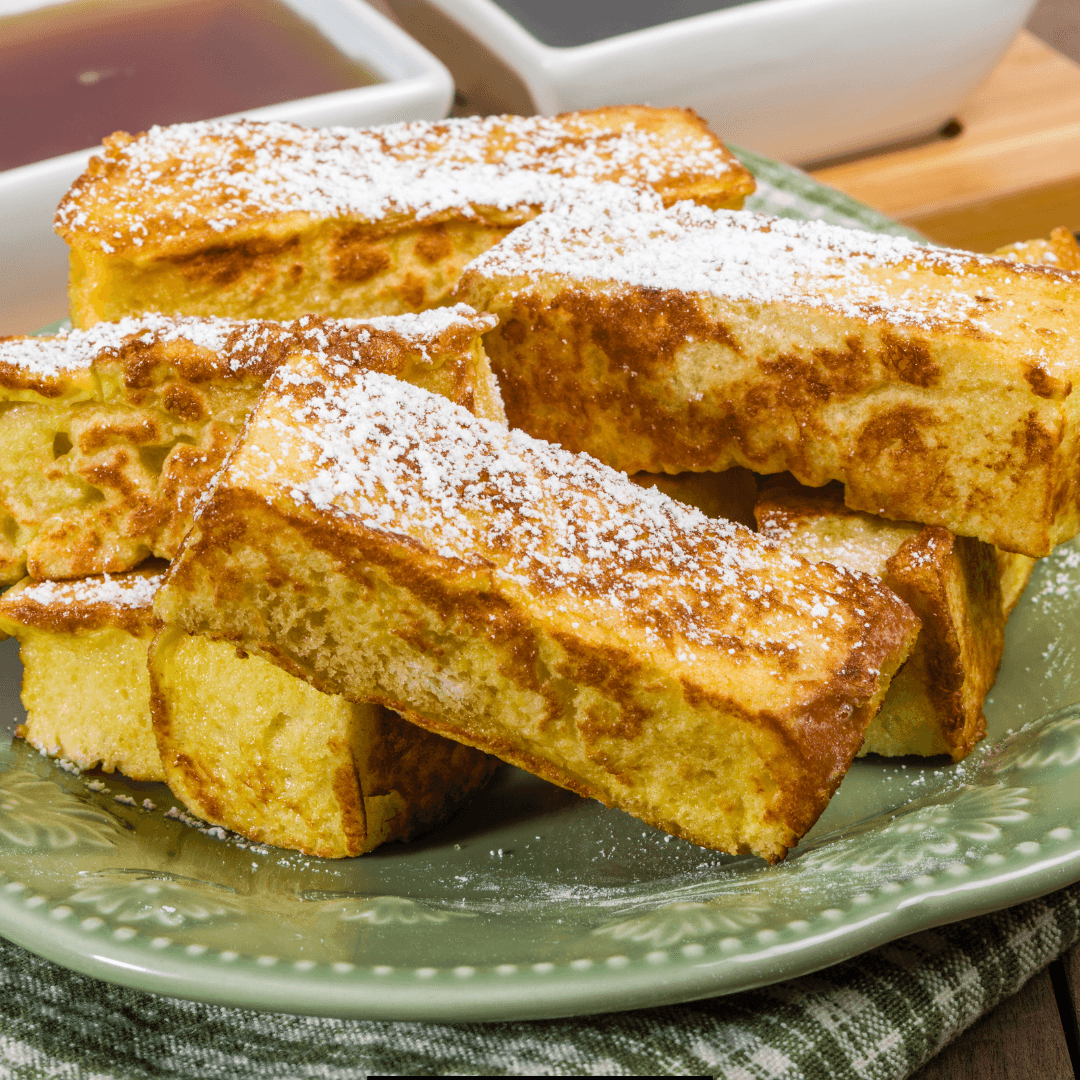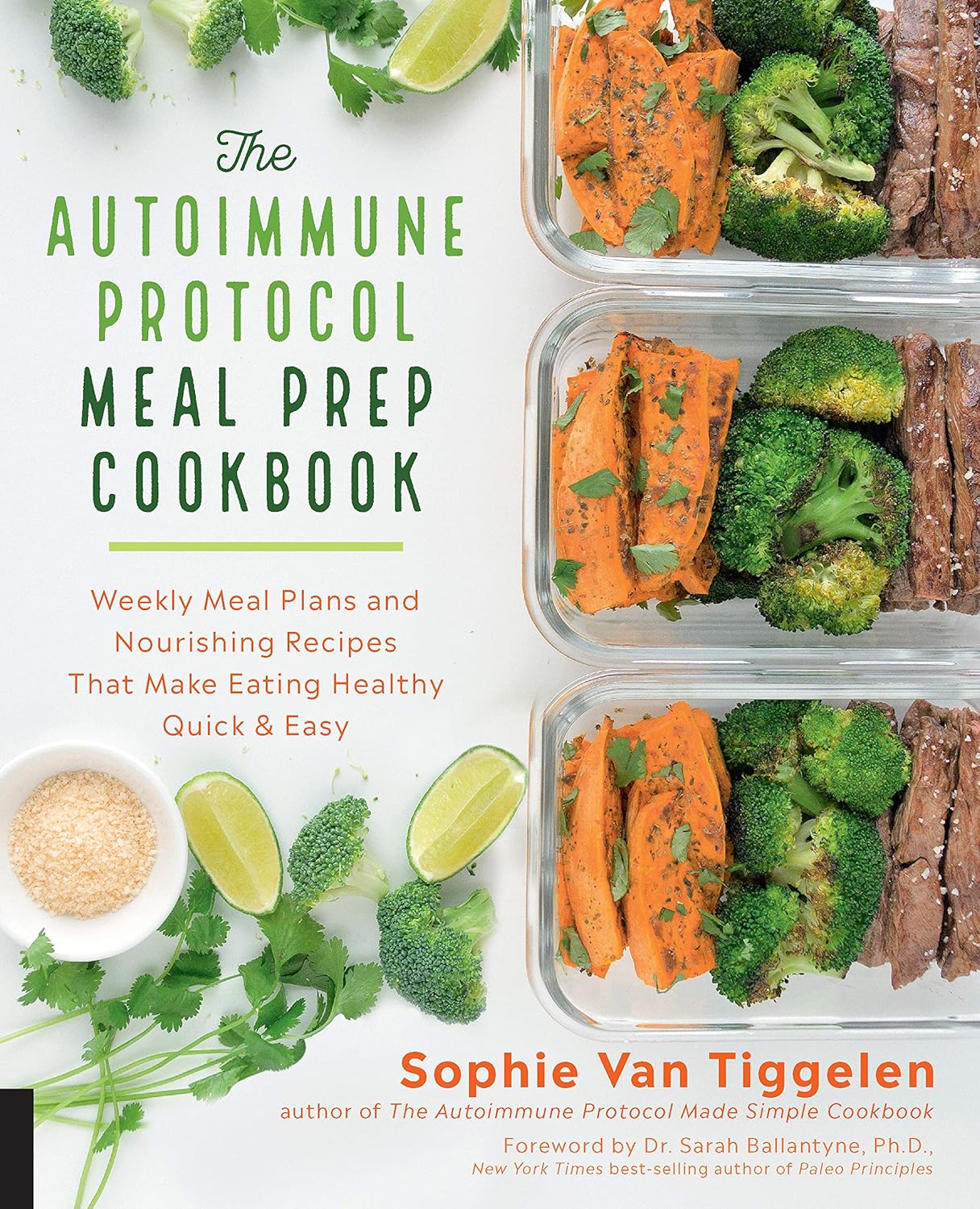I’m excited to share the recipe that transformed my hectic mornings into moments of sheer joy and satisfaction. It is not only a testament to the magic of preparing ahead but also a nod to the comforting flavors that make Frozen French Toast a universal favorite.
How to make Frozen French Toast
Frozen French Toast is a pre-made version of French toast that’s been cooked and frozen for convenience. It’s typically found in the freezer section of grocery stores. You can heat it up quickly in a toaster, oven, or microwave—perfect for a fast breakfast.
Ingredients:
- 1 loaf of thick-cut bread (Brioche or Texas Toast works wonderfully)
- 6 large eggs
- 1 1/2 cups of whole milk (or a milk alternative for a lighter version)
- 1/4 cup of granulated sugar
- 1 tablespoon of vanilla extract
- 2 teaspoons of ground cinnamon
- 1/2 teaspoon of ground nutmeg (optional)
- Pinch of salt
- Butter or non-stick spray for greasing
- Syrup, powdered sugar, or fruit for serving (optional)
Instructions:
- Mix the Batter: In a large mixing bowl, whisk together the eggs, milk, sugar, vanilla extract, cinnamon, nutmeg, and a pinch of salt until well blended. This creates the custard-like mixture that will give your French Toast its classic rich, sweet flavor.
- Soak the Bread: Dip each slice of bread into the egg mixture, allowing it to soak for about 20-30 seconds on each side. Be sure that each slice is thoroughly coated but not soggy.
- Cook the French Toast: Heat a large skillet or griddle over medium heat and coat with butter or non-stick spray. Place the soaked bread slices onto the skillet and cook until golden brown on each side, usually 3-4 minutes per side. Repeat with the remaining bread slices.
- Cooling Down: Lay the cooked French Toast slices in a single layer on a baking sheet and allow them to cool completely. The slices must be cool before freezing to prevent ice crystals from forming which can lead to sogginess.
- Freeze the French Toast: Once cooled, place the baking sheet with the French Toast slices into the freezer and freeze until solid, about 1-2 hours. This is known as flash freezing and helps the pieces not stick together.
- Storage: Transfer the frozen French Toast slices to a freezer-safe container or zip-top bag. Be sure to label the bag with the date to keep track of freshness.
- Reheating: When ready to enjoy your French Toast, reheat individual slices in the toaster, oven, or microwave until warmed through. If using an oven, bake at 350°F for about 10 minutes. For a crispier texture, you can use an air fryer or toaster oven.
Tips and Tricks:
- Bread Choice: The type of bread you choose for French Toast can significantly impact the final outcome. Stale, thick-cut bread is ideal because it holds up well to the egg mixture and retains a good texture when frozen and reheated.
- Freeze Separately: If space allows, try freezing the slices on a baking sheet before moving them into a bag—this will prevent them from sticking together.
- Reheating Options: For convenience, many prefer using a toaster for reheating frozen French Toast as it provides a crisp exterior and a warm, fluffy interior.
- Serving Suggestion: Transform your French Toast into a gourmet treat by topping it with fruit compote, a drizzle of maple syrup, or whipped cream.
- Customizable: You can experiment with the custard mixture by adding different spices, extracts, or even a splash of your favorite liqueur.
- Avoid Sogginess: Do not soak the bread for too long; if the bread is too wet before cooking, it may result in soggy toast even after freezing and reheating.
What to serve with
Serving the right accompaniments with Frozen French Toast can elevate it from a simple breakfast item to a full, hearty meal.
Sweet Toppings:
- Maple Syrup: A classic pairing with French Toast, pure maple syrup brings a sweet, natural flavor that wonderfully complements the spiced bread.
- Powdered Sugar: A dusting of powdered sugar not only adds a light sweetness but also makes the dish look more appealing.
- Fruit Compote or Syrups: Berry compote, apple cinnamon syrup, or any fruit-based sauce can add freshness and tang to your French Toast.
- Whipped Cream: A dollop of whipped cream can make the meal feel more decadent and special.
- Honey or Agave: For a natural and slightly different sweet taste, drizzle honey or agave nectar over the top.
- Nutella or Chocolate Syrup: For chocolate lovers, spreading Nutella or drizzling chocolate syrup over the French Toast will make for an indulgent treat.
Fresh Fruits:
- Berries: Strawberries, blueberries, raspberries, and blackberries are all excellent when served fresh with French Toast.
- Banana Slices: Adding banana slices provides a creamy texture and a complimenting sweet flavor.
- Apple Slices: Thinly sliced apples with a sprinkle of cinnamon can add a crunchy and sweet-tart contrast.
- Citrus Segments: For a burst of freshness, serve with segments of orange or grapefruit.
Nuts and Seeds:
- Sliced Almonds: They add a nice crunch and nutty flavor, plus a boost of healthy fats.
- Chopped Pecans or Walnuts: They provide a rich, earthy flavor and satisfying texture.
- Chia Seeds or Flaxseeds: Sprinkle some on top for an added nutritional punch.
Dairy:
- Yogurt: A side of Greek yogurt or regular yogurt can balance the dish out with some tang and provides additional protein.
- cottage cheese: A scoop of cottage cheese alongside your French Toast adds calcium and protein.
- Cheese: For a savory twist, consider serving French Toast with a mild cheese like mascarpone or cream cheese.
Savory Sides:
- Bacon or Sausage: The saltiness and crunchiness of bacon or the savoriness of sausage complements the sweetness of the French Toast.
- Scrambled or Fried Eggs: Adding eggs to the side makes this a more complete meal with additional protein.
- Hash Browns or Roasted Potatoes: To add a savory carbohydrate element, potatoes work as a great side for a brunch spread.
- Smoked Salmon: For a luxury brunch feel, serve with smoked salmon, cream cheese, and capers on the side.
Beverages:
- Coffee or Tea: A hot cup of coffee or tea goes well with any breakfast item, including French Toast.
- Fresh Juice: Orange juice is traditional, but apple, cranberry, or pear juices also pair well with the meal.
- Smoothies: A fruit smoothie can add a refreshing and healthy touch to your breakfast.
- Milk or Plant-Based Milk: Simply serving with a glass of cold milk can be enough to round out the meal.
Ingredients Substitutes

Frozen French Toast is a convenient and delightful breakfast option that you can make in bulk and enjoy over time. However, you might find yourself lacking some ingredients or needing substitutes due to dietary restrictions or preferences.
1. Bread:
Original: Thick-sliced bread like brioche or challah is typically used for its rich flavor and sturdy structure.
Substitutes: Whole-grain or multigrain bread is a healthier option. Gluten-free bread is also a great alternative for those with gluten sensitivities. For a different texture, Texas toast or French baguette slices can work well.
2. Eggs:
Original: Eggs are essential for creating the custard base that soaks into the bread.
Substitutes: For a vegan option, a mixture of ground flaxseeds or chia seeds with water can mimic the binding property of eggs. About 1 tablespoon of ground seeds mixed with 3 tablespoons of water is equivalent to one egg. Another option is to use mashed banana or unsweetened applesauce, which adds a hint of sweetness.
3. Milk:
Original: Whole milk or half-and-half is used to create a rich custard.
Substitutes: Any non-dairy milk, such as almond milk, soy milk, coconut milk, or oat milk, can be used for a dairy-free or vegan version. These may alter the flavor slightly, with coconut milk adding a tropical hint.
4. Sugar:
Original: Granulated sugar sweetens the custard mixture.
Substitutes: For a more natural alternative, honey, maple syrup, or agave nectar can be used in equal parts. For a sugar-free version, stevia or erythritol can substitute for sugar, though you’ll have to adjust according to taste since their sweetness can vary.
5. Extracts and Spices:
Original: Vanilla extract, cinnamon, and nutmeg are commonly used to flavor the custard.
Substitutes: Almond extract can replace vanilla in smaller quantities for a different flavor profile due to its stronger flavor. Pumpkin spice can substitute for cinnamon and nutmeg, especially for a fall-themed French Toast. Cardamom or allspice are also lovely alternatives or additions.
6. Butter:
Original: Butter is typically used for frying the French Toast before freezing.
Substitutes: For a dairy-free or vegan version, coconut oil, vegan margarine, or any neutral vegetable oil (like avocado or sunflower oil) can be used. These options will slightly alter the flavor but provide a similar richness.
Final Thoughts
With these detailed instructions, making Frozen French Toast is a breeze. It’s a splendid way to have a delicious and homey breakfast available at your fingertips, even on the busiest of mornings

Ingredients
- 1 loaf of thick-cut bread
- 6 large eggs
- 1 1/2 cups of whole milk
- 1/4 cup of granulated sugar
- 1 tablespoon of vanilla extract
- 2 teaspoons of ground cinnamon
- 1/2 teaspoon of ground nutmeg (optional)
- Pinch of salt
- Butter or non-stick spray for greasing
- Syrup, powdered sugar, or fruit
Instructions
- Mix the Batter: In a large mixing bowl, whisk together the eggs, milk, sugar, vanilla extract, cinnamon, nutmeg, and a pinch of salt until well blended. This creates the custard-like mixture that will give your French Toast its classic rich, sweet flavor.
- Soak the Bread: Dip each slice of bread into the egg mixture, allowing it to soak for about 20-30 seconds on each side. Be sure that each slice is thoroughly coated but not soggy.
- Cook the French Toast: Heat a large skillet or griddle over medium heat and coat with butter or non-stick spray. Place the soaked bread slices onto the skillet and cook until golden brown on each side, usually 3-4 minutes per side. Repeat with the remaining bread slices.
- Cooling Down: Lay the cooked French Toast slices in a single layer on a baking sheet and allow them to cool completely. The slices must be cool before freezing to prevent ice crystals from forming which can lead to sogginess.
- Freeze the French Toast: Once cooled, place the baking sheet with the French Toast slices into the freezer and freeze until solid, about 1-2 hours. This is known as flash freezing and helps the pieces not stick together.
- Storage: Transfer the frozen French Toast slices to a freezer-safe container or zip-top bag. Be sure to label the bag with the date to keep track of freshness.
- Reheating: When ready to enjoy your French Toast, reheat individual slices in the toaster, oven, or microwave until warmed through. If using an oven, bake at 350°F for about 10 minutes. For a crispier texture, you can use an air fryer or toaster oven.









